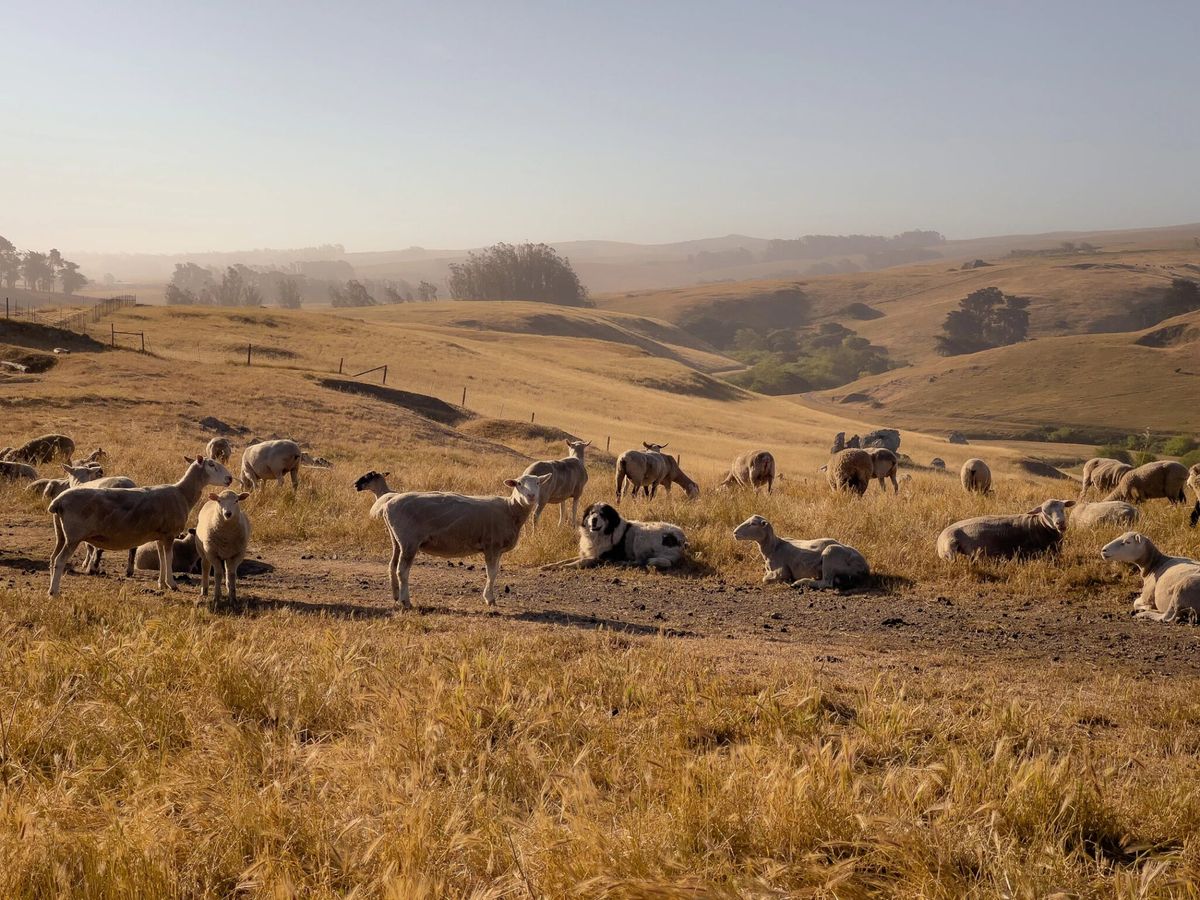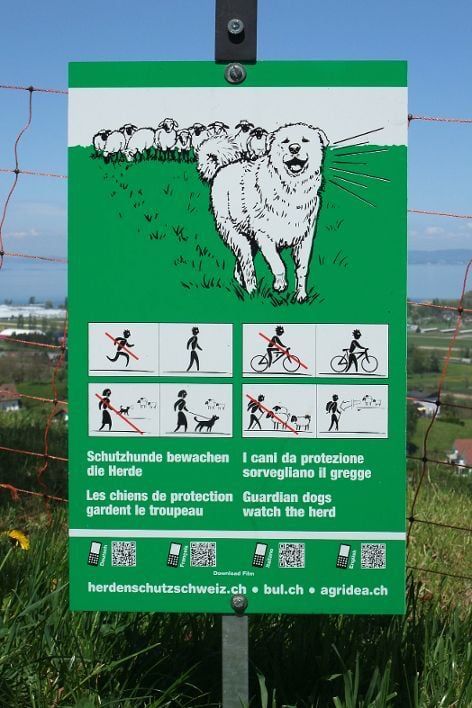LGD on the pasture
Do you really know how to behave if you meet a flock of sheep on your hiking trail? In UE countries, informations about it would be accessible for tourists, especially on the areas passing through the seasonal grazing areas.

Every large dog guarding a herd of animals is reacting independently before the shepherd does, even instead of the shepherd. That dog remains in the working mode all the time - every day and night - even if looks like its lazily resting on the surface. Those dogs naturally cooperate in a group with each other, tightly attached to dedicated species of protected animals. That's why, just in case, the area which they're working on should be fenced or marked so its warning border is visible enough.
Livestock guarding dogs camouflage thanks to their coat color - at first impression invisible among numerous livestock on the meadow and/or masked by environmental elements. From a distance, simply, they let know about their presence with regular barking. Then, if concerned, step by step they're approaching with intention to persuade an intruder to withdraw from the patrolled territory and the barking intensity increases.
They'll treat the same way a predatory animal, a stranger, even more in case of a stranger dog.
- If you're running / walking fast → Slow down when you're passing nearby or passing any sheep/cattle flock from the distance. Stop, if it's necessary - that is when the LGD starts to approach.
Fast moving object can alarm the LGD, which is going to respond immediately to dynamic changes in the neighborhood. Keep your distance. Behave calm.
- If you (intentionally or not) cut your way through the area where any sheep/cattle flock is grazing (even if they seem to be unguarded) → Turn around and turn back slowly. Stop, if it's necessary - that is when the LGD is next to you and doesn't go away.
Turning back you have a chance to avoid the confrontation with a large barking pastoral dog. Increase your distance. Behave calm.
- If your dog is runnig around unleashed → Call your dog to come back and put him/her on the leash, before you enter the unknown meadows. Generally, walk your dog on the long leash, if it's necessary - everywhere, on every open or wild areas (such a meadow, forest).
Even more so, if your dog directly reached an encountered sheep/cattle flock (without a fence, a fence easy to jump/climb/crawl). Especially, if your dog starts approach the herd of animals and/or is barking on them. LGD is able to treat the dog outsider as a potential danger. In such situation the confrontation would be unavoidable.

🇪🇺 Remember!
- Livestock Guardian Dog IS WORKING on the pasture. It is not a tourist attraction! Do not provoke. Do not bother.
- LGD is working INDEPENDENTLY from any presence/absence of an owner/keeper/shepherd nearby (or anywhere at all).
- LGD working style is INSTINCTIVE and written in its working standard, which depends on patrolling, protection i deterrence. THAT’S WHY they are approaching, following and BARKING.
- Blocking of passage/entrance, „accompaniment” with barking and running ahead are that dog’s NATURAL behavior.
If you behave according to the rules, your meeting with the working LGD will stop with its warning barking, afterwards the dog will move away and come back to its pastoral work.
And yes, it is ok.
🇵🇱 Pamiętaj!
- Duży pies pasterski na pastwisku PRACUJE. Nie jest atrakcją turystyczną! Nie prowokuj. Nie zaczepiaj.
- Pracuje NIEZALEŻNIE od (nie)obecności opiekuna/hodowcy/pasterza w pobliżu (albo w ogóle w okolicy).
- Styl pracy dużych psów pasterskich jest INSTYNKTOWNY i wpisany we wzorzec użytkowy. Polega na patrolowaniu, ochronie i odstraszaniu. DLATEGO podchodzą, podążają i SZCZEKAJĄ.
- Blokowanie przejścia/dostępu, “towarzyszenie” ze szczekaniem i wybieganie naprzód są dla tych psów NATURALNYM zachowaniem.
Jeśli zachowasz się według reguł, spotkanie z dużym owczarkiem skończy się na ostrzeżeniu szczekaniem, po czym pies odejdzie do swoich pasterskich zajęć.
I owszem, jest to ok.
